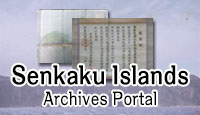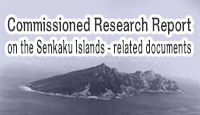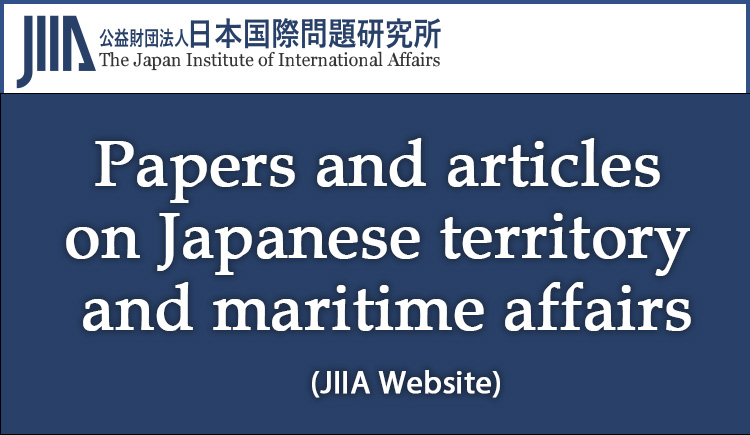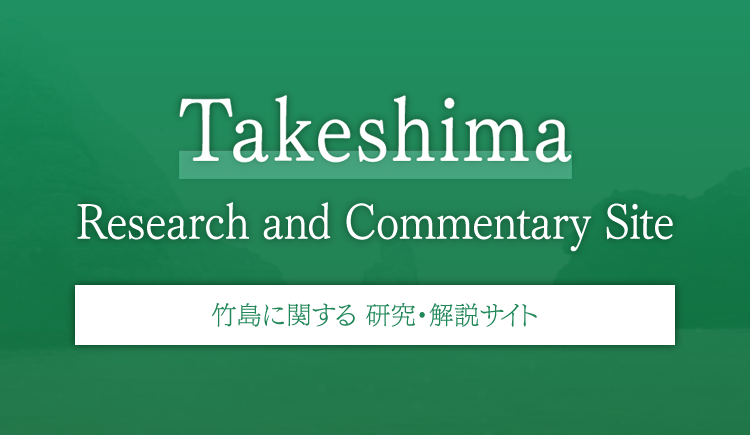The documents and materials published on this website were collected, researched, and prepared with advice from experts, as a part of a Government-commissioned project. The contents of this website do not reflect the views of the Government.
Comprehensive issues
2. Establishment of gunnery and bombing ranges by the U.S. military in 1948
The waters around the Senkaku Islands had been known among fishermen as prime fishing grounds for fish such as bonito, swordfish, and machi (a general term in Okinawa for snapper, gnomefish, and Japanese rubyfish).3 However, the interest U.S. forces stationed in Okinawa had in the Senkaku Islands was founded on the Senkakus' geographical status as uninhabited islands in the East China Sea.
In January 1948, the U.S. military designated the area around Kuba Island, one of the Senkaku Islands, as a "permanent danger area," and, in April of the same year, announced that the U.S. Air Force in Okinawa had established Kobi Sho Range as a gunnery and bombing range (→Document 9, Document 10, Document 11).
Response by the Republic of China (Taiwan)
After the establishment of gunnery and bombing ranges in the waters around the Senkaku Islands, in 1953, the Republic of China's Department of Agriculture and Forestry made inquiries through the ROC Ministry of Foreign Affairs with U.S. forces in Okinawa about the practice ranges (see the document "Strategic Bombing Exercises on Uninhabited Ryukyu Islands Designated by U.S. Forces Stationed in Ryukyu"). In December 1952, the Department of Agriculture and Forestry requested that the Ministry of Foreign Affairs make an inquiry concerning the establishment of gunnery and bombing ranges by U.S. forces in Okinawa around “the Uninhabited Islands (as the Senkaku Islands were described in Taiwan,)” where Taiwanese fishermen visit to catch spearfish swordfish from January through May each year. In response, the Ministry made an inquiry in January 1953 with the United States Civil Administration of the Ryukyu Islands (USCAR), which held jurisdiction over the Ryukyu Islands (It was not a protestation against the establishment of gunnery and bombing ranges). The USCAR replied that the five miles around Kuba Island in the Senkaku Islands was designated as a gunnery and bombing range and a permanent danger area. The response also stated that, first of all, Taiwanese fishermen would need prior approval from USCAR to enter the waters around the Nansei Islands and that compliance would not put the fishermen in danger.
Even after the administration of Okinawa was reverted to Japan in May 1972, in the Japan-U.S. Joint Committee, established under the provisions of Article 25, paragraph 1 of the Agreement under Article VI of the Treaty of Mutual Cooperation and Security between Japan and the United States of America, regarding Facilities and Areas and the Status of United States Armed Forces in Japan (Japan-U.S. Status-of-Forces Agreement), Japan and the U.S. agreed that the U.S. military would continue the use of the gunnery and bombing ranges around Kuba and Taisho islands, the agreement continues to be valid today.
Response by the government of the People's Republic of China
Despite the claim by the government of the People's Republic of China that the Senkaku Islands are "Chinese territory," for more than 70 years until December 1971, it had never lodged a protest or argument with the governments of Japan or the United States against a variety of measures that the Japanese and U.S. governments had taken vis-à-vis the Senkaku Islands after the incorporation of the Islands into the Japanese territory in 1895 including but not limited to: the U.S. government's military occupation or administration after World War II; the widely publicized establishment of a gunnery and bombing range by the U.S. Air Force in Okinawa around Kuba Island beginning in 1948; the inclusion of the Senkaku Islands in the areas to be returned under the terms of the Agreed Minutes of the Okinawa Reversion Agreement signed in June 1971.
Acquiescence under international law
This long period of tacit consent by the government of the People's Republic of China clearly contradicts its claim to sovereignty over the Senkaku Islands and constitutes "acquiescence" under international law. As clearly stated by the judgement in the 1962 Preah Vihear dispute at the International Court of Justice, “Qzri tacet consentire videtur si loqui debuisset ac potuisset.”4 In other words, one who should or can make a claim yet is silent is considered to have agreed. A protest would refute the acquiescence and is a means of preventing the maturation of prescriptive title or historic title. A state that has acquiesced surrenders the ability to repudiate both another state's claim to sovereignty over the land subject to acquiescence as well as the validity of the actions based on the said claim.
Document 9:
"Operations: Gunnery and Bombing Ranges (Supersession of the 1st Air Division Regulation 55-8)" (produced by HQ 1st Air Division; "Personnel: Okinawan"; command dated January 15, 1948), (U.S. National Archives and Records Administration), (posted on the Senkaku Islands Archives Portal)
This document dated January 15, 1948 designates five permanent danger areas, including the area in and around Kobi Sho (in reference to Kuba Island in the Senkakus).
Document 10:
"Designation of Permanent Danger Areas by the U.S. military command in Ryukyu" (produced by the Document Section, Liaison and Public Affairs Division, General Affairs Bureau, Government of the Ryukyu Islands; correspondence with USCAR; documents received; command dated April 9, 1948), (from the Okinawa Prefectural Archives)
In this document dated April 9, 1948, the U.S. military command in Ryukyu instructed the Governor of Okinawa to announce the relevant personnel that five areas, including in and around Kobi Sho (in reference to Kuba Island in the Senkakus), have been designated as permanent danger areas for use by the 1st Air Division.
The designation of Permanent Danger Areas by the U.S. military command in Ryukyu can be confirmed from several materials from the same year including the "Rinji Hokubu Nansei Shoto Koho" (an Amami Islands bulletin) on May 25, the "Koho Shin-Miyako" (a Miyako Islands bulletin) on May 27, and the "Yaeyama Times" (a Yaeyama Islands newspaper) on November 1.
The fact that the establishment of a gunnery and bombing range in and around Kuba Island by the U.S. Air Force in Japan was widely publicized provides a basis for establishing acquiescence by the government of the People's Republic of China.
Document 11:
"Oki-Sui No.44: Fishing Prohibition Zones due to Bombing Exercises" (produced by the Okinawan Civilian Administration; announcement dated April 22, 1948), (from the Okinawa Prefectural Archives), (2019 Final Report on Research of Documents concerning the Senkaku Islands," page 98)
In response to the instruction by the U.S. military command in Ryukyu to the Governor of Okinawa dated April 9, 1948, the Director of the Okinawa Fishery Department sent this document to the Chairperson of the Okinawa Fishery Co-operative Association, the head of other fisheries associations and others for the purpose of notifying of the prohibited fishing areas due to a bombing exercise.
The fact that the establishment of a gunnery and bombing range in and around Kuba Island by the U.S. Air Force in Japan was widely publicized provides a basis for establishing acquiescence by the government of the People's Republic of China.
Note 3
Makomo Kuniyoshi, "The History and Current Status of Fishing Grounds around the Senkaku Islands," "Fisheries Science," Vol. 77, No. 4 (2011), pp. 704-707.
Note 4
Senkaku Islands
Research and Commentary Site
- I Comprehensive issues
- II Commentary on themes by historical period
- III Analysis of claims by other countries





